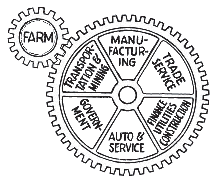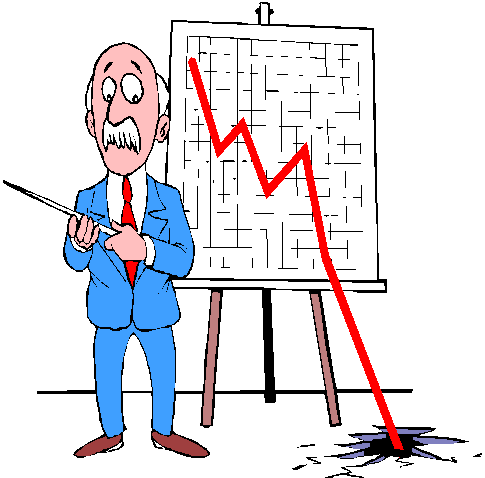 |
 |
It
is the mission of the National Organization for Raw Materials to maintain
and add to the body of knowledge of raw material economics, then use all
possible informational means to educate an ever-growing number of U.S.
citizens and leaders. It is NORM's
belief that a citizenry, informed about raw material economics, can return
the U.S. economy to widespread and stable prosperity.

This will give
you access
to
MEMBERS LOUNGE
UNDER CONSTRUCTION
The National Organization
for Raw Materials (NORM)
is an organization dedicated to scientific economic analysis and education.
It was established more than 40 years ago as the successor to the Raw Materials
National Council, which was formed in the 1930s. Its members, officers,
and Executive Board members -- who finance the organization's annual budget
through their dues and donations -- refer to NORM
as a "think tank" focusing on the role of raw materials in the American
and world economy.
NORM's
analysis of the U.S. economy differs from mainstream economic analysis.
It is not predicated upon any "economic theory" such as "Keynesian," "supply-side,"
"trickle-down," "monetarist," etc. In the 1930s, its founder -- Carl
H. Wilken -- began his analytical studies with no
pre-conceived ideas or economic theories. He simply wanted to scientifically
analyze the economic records of the U.S. government to find out what "really"
caused the Great Depression and to determine if a future depression could
be prevented.
NORM
members have faithfully stuck to Wilken's original premise: Scientifically
studying the nation's economic record and interpreting it so that current
and future policies will strengthen and stabilize the U.S. economy.
Here's what our 75 years
of accumulated study of the nation's economic record reveals:
There
is a NATURAL ECONOMIC LAW that, if steadfastly applied, leads to
(1) widespread prosperity among the U.S. population;
(2) broad based economic expansion, job growth, and monetary stability;
(3) consumption of the nation's annual production of raw materials, manufactured goods, and services without debt accumulation, and
(4) balanced international trade.
Briefly
stated, here's how NATURAL ECONOMIC LAW works:
When the nation's
production of raw materials from its farms, ranches, timberlands, oceans,
mines, wells, and recycling centers first enters into trade channels at prices
in balance with the costs of labor and capital,
then the U.S. economy will operate at virtually full employment, debt expansion
will cease and public and private debt will shrink, interest rates will
decline and stay low, inflation will be nil, and there will be sufficient
taxes collected to balance governmental budgets at all levels.
Why does the U.S. economy
respond so positively to "parity" raw material prices? Simply stated, it's
because the "Trade Turn" for every raw material dollar of income is maximized.
The Annual Economic Cycle of production, processing, distribution, and
consumption of the nation's goods and services operates at full efficiency
on an earned-income basis.
In recent decades, it's become
unfashionable to educate the American public about the Annual Economic
Cycle of Production, Processing, Distribution, and Consumption. In fact,
dictionaries and encyclopedias no longer define economics in terms of the
Annual Economic Cycle. This is unfortunate because it is misleading. Citizens
erroneously begin to believe that wealth is always counted in terms of
money when, in truth, they should understand that all "new wealth" originates
in the natural world and that all of Man's subsequent activities simply
"add value" to the Earth's products.
The summation of NORM's
findings from more than 70 years of analyzing the nation's economic record
boils down to this statement:
The health, robustness, and sustainability of the American economy is directly tied to the production of raw materials and the price at which those raw materials first enter into commercial channels. When raw materials enter trade channels at prices in balance with the prices of labor and capital, the economy operates on an earned-income basis with no buildup of public and private debt. Conversely, when raw materials enter trade channels at less-than-parity prices with labor and capital, the economy lacks sufficient earned dollars to operate on an debt-free basis, therefore, public and private debt accumulates.
That simple explanation of raw material economics explains why America today suffers from more than $50-trillion in public and private debt and why much of it is unserviceable.
Website optimized by: NORM Economics Org.
Used with permission. Contact the webmaster Randy Cook Update 3/1/17